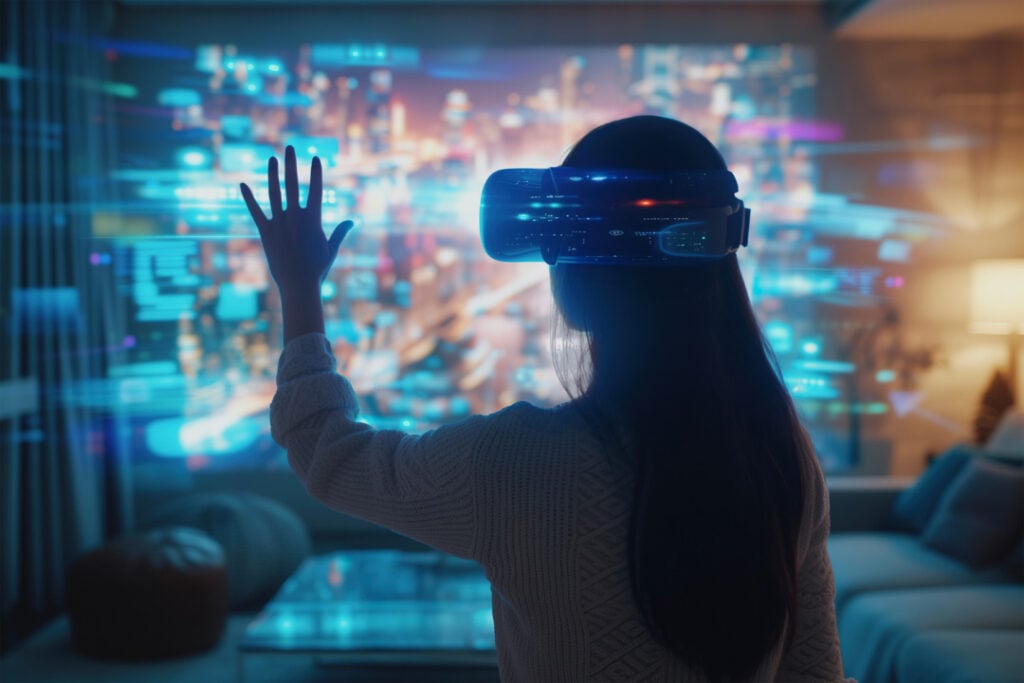The world of casinos has always been about creating an immersive and engaging experience for players. With the advent of technology, casinos have been incorporating various innovations to enhance the gaming experience. One such innovation that has been gaining traction is the use of augmented reality (AR) casino overlays. These overlays project 3D game boards onto physical tables, creating a unique and interactive experience for players. For instance, the golden clover app has been at the forefront of this technology, providing users with an immersive experience that combines the thrill of physical casinos with the convenience of digital gaming.
How Augmented Reality Casino Overlays Work
Augmented reality casino overlays use a combination of cameras, sensors, and display technology to project 3D game boards onto physical tables. The process begins with the installation of cameras and sensors around the table, which track the movements of players and the game pieces. This data is then used to generate a 3D game board, which is projected onto the table using display technology such as projectors or LED screens. The result is a seamless and interactive experience that allows players to engage with the game in a completely new way. For example, in a game of roulette, the AR overlay can project a 3D wheel onto the table, allowing players to place bets and watch the wheel spin in real-time.
Benefits of Augmented Reality Casino Overlays
The benefits of augmented reality casino overlays are numerous. Firstly, they offer an immersive experience that enhances the overall gaming experience. By projecting 3D game boards onto physical tables, players can engage with the game in a more interactive and engaging way. Secondly, AR overlays can increase player engagement and retention. By providing a unique and innovative experience, casinos can attract and retain players who are looking for something new and exciting. Platforms like golden clover real money are already exploring how these technologies can redefine online casino experiences. Finally, AR overlays can also provide casinos with valuable data and insights on player behavior, allowing them to optimize their games and improve the overall gaming experience.
Types of Augmented Reality Casino Overlays
There are several types of augmented reality casino overlays that are currently being used in the industry. These include:
- Table overlays: These overlays project 3D game boards onto physical tables, creating a seamless and interactive experience for players.
- Wall overlays: These overlays project 3D game boards onto walls, creating a large and immersive experience for players.
- Floor overlays: These overlays project 3D game boards onto floors, creating a unique and interactive experience for players.
Examples of Augmented Reality Casino Overlays in Action
There are several examples of augmented reality casino overlays in action. For instance, the Bellagio casino in Las Vegas has installed an AR overlay system that projects a 3D game board onto the table in their poker room. The system allows players to engage with the game in a more interactive and engaging way, and has been shown to increase player engagement and retention. Another example is the MGM Grand casino, which has installed an AR overlay system that projects a 3D game board onto the wall in their sports book. The system allows players to watch games and place bets in a more immersive and engaging way.
Challenges and Limitations of Augmented Reality Casino Overlays
While augmented reality casino overlays offer a number of benefits, there are also several challenges and limitations to their use. One of the main challenges is the cost of installation and maintenance. AR overlay systems require a significant investment in hardware and software, and can be expensive to maintain and update. Another challenge is the need for standardization. Currently, there is no standard for AR overlay systems, which can make it difficult for casinos to integrate them into their existing infrastructure. Finally, there are also concerns about the potential impact of AR overlays on player behavior. For example, some players may become too engaged in the game and lose track of their betting limits.
Future of Augmented Reality Casino Overlays
Despite the challenges and limitations, the future of augmented reality casino overlays looks bright. As the technology continues to evolve and improve, we can expect to see more casinos adopting AR overlay systems. One of the main trends that we can expect to see is the integration of AR overlays with other technologies, such as artificial intelligence and blockchain. This will allow for the creation of even more immersive and interactive experiences, and will provide casinos with valuable data and insights on player behavior. Another trend that we can expect to see is the use of AR overlays in new and innovative ways. For example, some casinos are already using AR overlays to create immersive and interactive experiences for players in their loyalty programs.
Conclusion
In conclusion, augmented reality casino overlays are revolutionizing the gaming industry by providing an immersive and interactive experience for players. By projecting 3D game boards onto physical tables, AR overlays create a unique and engaging experience that enhances the overall gaming experience. While there are several challenges and limitations to the use of AR overlays, the future looks bright. As the technology continues to evolve and improve, we can expect to see more casinos adopting AR overlay systems and using them in new and innovative ways. Whether you’re a seasoned gamer or just looking for a new and exciting experience, augmented reality casino overlays are definitely worth checking out. With the help of innovative apps like the golden clover app, the future of gaming has never been brighter.

Rick Heicksen is the Vice President of Sales at Chetu, Inc., a renowned global software development company. He manages accounts in multiple sectors, including Food & Beverage, Agriculture, Transportation, Energy, and IT Service Management. With his expertise in business development and exceptional customer service, Rick has helped many clients grow their businesses. Rick is known for his versatility and ability to keep pace with technological advancements, which has significantly influenced his success at Chetu. He earned his degree from Chapparal Community College and is passionate about staying up-to-date with the latest industry trends. Since joining Chetu in 2019, he has risen quickly and established himself as a thought leader within the Food and Beverage community, helping the company grow into an award-winning organization.





![‘Frankenstein’ Review – Guillermo del Toro’s Definitive Look At The Nature And Nurture Of Monstrosity [TIFF 2025] ‘Frankenstein’ Review – Guillermo del Toro’s Definitive Look At The Nature And Nurture Of Monstrosity [TIFF 2025]](https://cdn.geekvibesnation.com/wp-media-folder-geek-vibes-nation/wp-content/uploads/2025/10/Frankenstein-175_PF_20240430_20377_R-300x200.jpg)
![‘Wake Up Dead Man: A Knives Out Mystery’ Review – In Rian Johnson We Trust [LFF 2025] ‘Wake Up Dead Man: A Knives Out Mystery’ Review – In Rian Johnson We Trust [LFF 2025]](https://cdn.geekvibesnation.com/wp-media-folder-geek-vibes-nation/wp-content/uploads/2025/10/Wake-Up-Dead-Man-A-Knives-Out-Mystery-300x169.jpg)